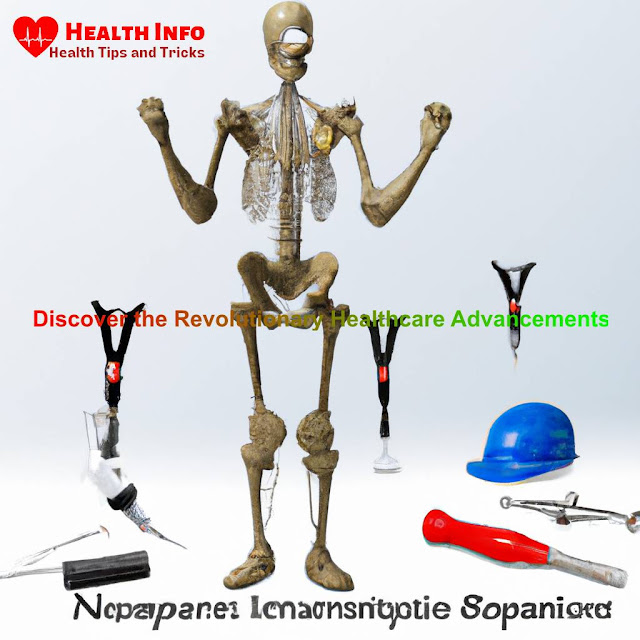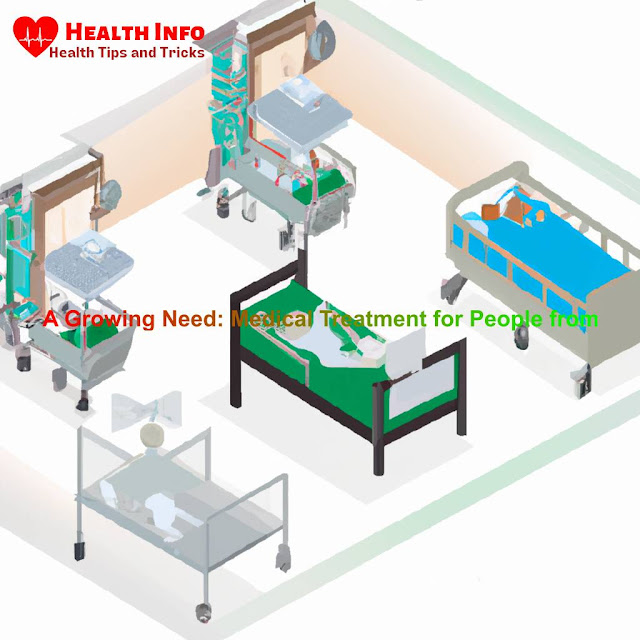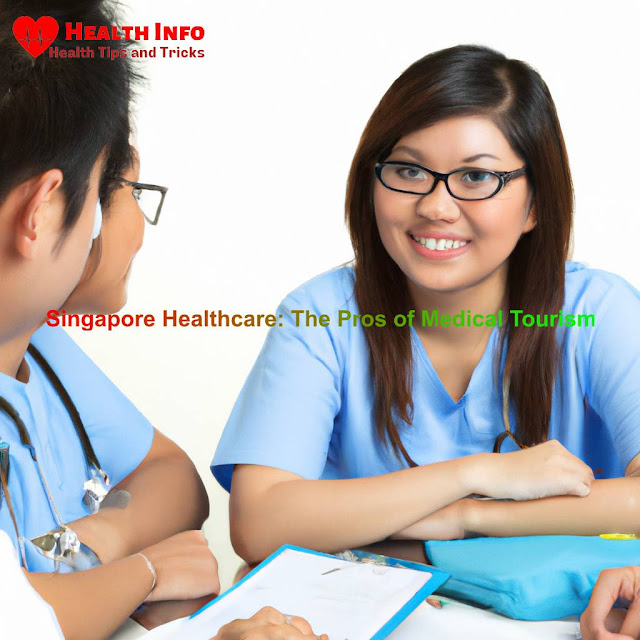Singapore's Healthcare Legendary - 8 Medical Advances
 |
| Singapore's Healthcare Legendary - 8 Medical Advances |
Singapore has seen a number of innovative medical advancements over its recent history, from the first cord blood transfusion from an unrelated donor to conjoined twin separation. Its medical facilities are praised for both their quality and affordability, leading to the country becoming a notable medical tourism linchpin. Patients from around the world have chosen this nation to receive treatments for a variety of medical problems, including cardiology, gynaecology, and orthopaedic surgery. With its reliable staff, cutting-edge equipment, and competitive prices, it is no surprise that Singapore's medical industry continues to attract visitors. 8 Groundbreaking Medical Achievements in Singapore, Explained.
Discover the Revolutionary Healthcare Advancements in Singapore
Singapore's healthcare industry is renowned for a number of innovative medical advancements, exemplified by the groundbreaking events described in the following list. In 1995, Singapore-based doctors became the first to effect a successful donor-related peripheral blood stem cell transplant. In 2000, the region saw its first unicompartmental arthroplasty achieved by doctors in Singapore. The nation's medical professionals also conducted the initial heart transplant with an Electronic Heart Assist (Left Ventricular Assist Device) on a 36-year-old patient with severely impaired heart function in 2001. Later, in the same year, the world's first successful cord blood transfusion from a donor with no relation to the recipient was performed in Singapore. 2002 saw Southeast Asia's initial instance of Adult Living Donor Liver Transplant. In 2004, the revolutionary tooth-in-eye implant was a remarkable success. Then, in 2005, Singapore physicians performed an historic operation in which they separated conjoined twins sharing a stomach. Finally, the same year saw Asia's initial kidney cum bone marrow transplant.
Experience the Cutting Edge of Medical Science with the following notable achievements:
- In 1995, Singapore-based doctors became the first to effect a successful donor-related peripheral blood stem cell transplant.
- In 2000, the region saw the first unicompartmental arthroplasty achieved by doctors in Singapore.
- Medical professionals also conducted the initial heart transplant with an Electronic Heart Assist (Left Ventricular Assist Device) on a 36-year-old patient with impaired heart function in 2001.
- The world's first successful cord blood transfusion from a donor with no relation to the recipient was performed in Singapore in 2001.
Discover the Quality and Savings of Medical Care in Singapore
At present, Singapore has the highest number of Joint Commission International-accredited hospitals in all of Asia and its medical facilities are praised for both their quality and affordability. This has led to the country becoming a medical tourism linchpin, with over 300,000 people traveling to its hospitals in search of care each year. 2005 saw 374,000 healthcare visitors, and experts predict that the industry's market value in Asia and the Pacific will reach US$4 billion by 2012.
Benefits of Medical Tourism in Singapore
- No shortage of top-level medical treatment — Singapore leads Asia in Joint Commission International-accredited hospitals.
- Millions of dollars in savings — Singapore is known for its competitively lower hospital and healthcare costs.
- Quest for care — 300,000 people each year travel to Singaporean medical facilities in search of care at an affordable cost.
- Proven track record — Medical tourism in Singapore has been around since 2005 and is predicted to hit US$4 billion in Asia and the Pacific by 2012.
A Growing Need: Medical Treatment for People from Around the World in Singapore
It is not just citizens of nearby nations that are drawn to Singapore's facilities, either. People from Indonesia, Malaysia, the Middle East, Bangladesh, India, Australia, the United States and the U.K. all come to receive treatment for a variety of medical problems including cardiology, gynaecology, orthopaedic surgery, oncology, otorhinolaryngology, urology, neurosurgery and ophthalmology, as well as general medicine and surgery.
Here's what you need to know:
- Singapore has become home to medical treatment facilities for many international citizens, including those from Indonesia, Malaysia, the Middle East, Bangladesh, India, Australia, the U.S., and the U.K.
- These facilities allow for a variety of medical treatments, from cardiology, gynaecology and orthopaedic surgery to oncology, otorhinolaryngology, urology, neurosurgery, and ophthalmology.
- In addition to such treatment, general medicine and surgery is also available.
- The influx of international patients highlights the opportunities Singapore provides in the field of medical treatment.
Singapore Healthcare: The Pros of Medical Tourism in Singapore
The reasons behind the remarkable surge in Medical Tourism vary. For one, the country has specialized centers that provide top-level global healthcare. This is in addition to its reliable, experienced professionals and cutting-edge equipment. What's more, medical research and development in Singapore is robust, leading to treatments and techniques that are at the leading edge of the international healthcare industry. Lastly, the region's multi-cultural, multilingual atmosphere adds the peace of mind necessary for visitors to seek treatments in unfamiliar territory.
Reasons for Singapore's Remarkable Surge in Healthcare Solutions:
- Specialized centers providing top-level global healthcare
- Reliable, experienced professionals and cutting-edge equipment
- Robust medical research and development
- The region's multi-cultural, multilingual atmosphere
Receive Quality Healthcare at Affordable Costs with Medical Tourism in Singapore
In short, if you are looking for specialist diagnosis or general health care, Singapore is an ideal place to seek treatment that matches the standard of American and European hospitals, without breaking the bank. With so many advantages, it comes as no surprise that patients and travelers from around the globe have chosen this nation to be a destination for their medical treatments for years.
Here Are The Advantages of Health Care in Singapore:
- Highly qualified and specialized doctors and medical staff
- Competitively low cost for medical procedures
- Robust infrastructure and modern technology used in the hospitals
- State-of-the-art medical facilities and treatments
I wanted to express my heartfelt thanks for reading my article, 8 Groundbreaking Medical Achievements in Singapore, Explained.. Your time and attention are greatly appreciated, and I'm grateful for your support.
Keywords: Singapore, Medical Achievements, Healthcare Advancements, Medical Tourism, Affordable Healthcare
8 Groundbreaking Medical Achievements in Singapore, Explained - FAQ
Q: What is the first medical advancement Singapore achieved?
A: Singapore-based doctors were the first to effect a successful donor-related peripheral blood stem cell transplant in 1995.
Q: What was the unique operation performed in 2004?
A: The revolutionary tooth-in-eye implant was a remarkable success in 2004.
Q: How many people travel to Singapore's medical facilities for healthcare each year?
A: More than 300,000 people travel to Singapore annually in search of medical services.
Q: What type of treatments can be found in Singapore?
A: People can receive treatments for a variety of medical problems in Singapore, such as cardiology, gynaecology, urology, neurosurgery, and ophthalmology, as well as general medicine and surgery.
Q: Why is Singapore ideal for medical tourism?
A: Singapore has specialized centers that provide top-level global healthcare, reliable professionals and cutting-edge equipment, as well as competitive prices. What's more, its multi-cultural, multilingual atmosphere adds the peace of mind necessary for visitors to seek treatments in unfamiliar territory.
Q: How much is the medical tourism industry worth in this region?
A: Experts predict that the industry's market value in Asia and the Pacific will reach US$4 billion by 2012.







0 Comments